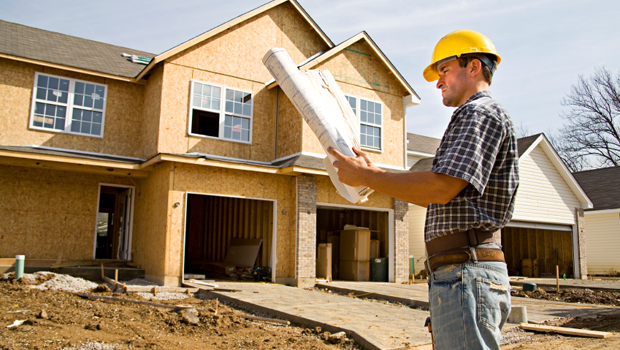General Contractor Richmond VA is responsible for turning the designs and renderings of architects, engineers, and interior designers into reality. They manage day-to-day operations and quality control at the construction site, as well as ensure that all building materials are of high quality and durability.
Your resume’s experience section should begin with your most recent position and list each job in reverse chronological order. Your skills section should follow and include any additional certifications or qualifications you possess.

Project planning is one of the most important aspects of a construction project. It establishes what needs to be done, how it will be completed and when it will be done. The project plan identifies what resources are needed to complete the work, including personnel, equipment, time and money. It also addresses any risks associated with the project and how they will be addressed. It also provides a detailed communication plan for stakeholders to ensure that they are updated at the appropriate intervals.
The project planning process can be lengthy and requires a significant amount of expertise. A general contractor can provide assistance with this phase of the project by developing a schedule, establishing a budget and providing other key information to help get the project started. They can also assist with the bidding process and negotiate contracts. They may also perform on site quality inspections during the construction process.
During the construction process, a general contractor will coordinate various tasks for the project with a number of specialty contractors. This includes mechanical and electrical contractors. They will also coordinate material and equipment suppliers. They will also work with superintendents who are on-site to manage the daily construction activities. The overall goal is to keep construction activities on schedule in terms of the completion date and to meet quality standards.
A good project manager will carefully consider all of the factors involved in a construction project before creating a plan. They will take into account the size of the project, its scope and the different requirements for completing each task. They will then carefully determine which tasks require the most resources and allocate those accordingly. For example, if a task requires a lot of materials, it will be prioritized over other tasks that don’t need as much material.
When you are working on a construction project, it’s essential that workers follow the proper procedures. This promotes safety, minimizes risks, and helps make sure the project is completed according to the original plan. General contractors are responsible for ensuring that all workers follow these steps and that every aspect of the construction process is done properly.
GCs are also able to help make sure all the right subcontractors are brought on-site at the right time to perform their specialized services. This is especially important for projects that are large and complex or require multiple permits. GCs can also coordinate with other construction professionals like engineers, architects, and designers to ensure that the project is completed on time and within budget.
General contractors are also responsible for creating a quality control plan that is specific to the project. They will identify the scope of work to be performed and determine how this work will be inspected and tested to make sure that it is up to standards. GCs will also provide their own personnel to perform onsite inspections and tests.
In addition to this, a good GC will also make sure that the final product meets all of the project’s specifications and that any alterations are approved by the owner prior to performing them. This allows for transparency and accountability in the construction process.
If you’re planning a simple home remodel or a new building, then you may be able to skip the GC and tackle the project yourself. However, if you’re looking to build a custom luxury home or knock down walls to create a larger space, then a GC is essential to make your vision a reality and to keep the construction on schedule, within budget, and up to specs.
A successful construction project requires meticulous planning and flawless execution, which necessitates a comprehensive budget management process. General contractors must examine project plans and bid documents to estimate total costs, which include hard and soft expenses. They should consider the cost of materials, equipment, labor, design fees, permit costs, and other miscellaneous expenses.
Keeping track of project expenses and reporting them periodically throughout the build process is essential for effective construction budgeting. Construction managers can utilize variance analysis techniques to pinpoint areas where expenditures exceed original estimates, enabling them to take corrective measures promptly. Additionally, they can set up contingency budgets to handle any unforeseen circumstances.
In the construction industry, constructing a home or commercial building on time and within budget is important for both builders and clients. It ensures that all parties are satisfied and can work together to complete the project as agreed upon. It also leads to greater success for the general contractor, resulting in repeat business and referrals.
Construction budgets serve as indispensable tools for strategic decision-making, guiding the allocation of resources and ensuring that each expense aligns with the allocated budget. They help determine choices like the grade of appliances and materials purchased, the level of skilled personnel hired to do tasks, and other elements that affect a build’s final price tag.
Construction budgets must also include any design fees that the project owner or general contractor may incur. These can include fees for architects, engineers, interior designers, surveyors, and other consultants that will create the plans and specifications for the project. Similarly, any fees associated with loan services should be included as well. These can include loan interest, draw administration, and closing costs.
Contractors are in a position to offer a variety of incentives and discounts during the bidding process to win contracts. They often provide proof of credentials, insurance, and customer references. They also may be willing to negotiate their price and terms of payment once a project has been awarded. They know that being cooperative during contract negotiations enables them to be competitive in the future when they bid on other projects.
The negotiated terms and conditions of a construction project are based on the needs, budget, schedule, and requirements of the owner, project manager, architect, and general contractor. A good contract is a mutually beneficial agreement that addresses all parties’ interests. The goal is to ensure quality work, adherence to the budget and schedule, and clear definition of the scope of work.
Contracts typically incorporate standard form language published by the American Institute of Architects (AIA), Design-Build Institute of America (DBIA), and ConsensusDocs. This standard language includes many provisions for progress payments, change order procedures, lien waivers, project milestones, and other critical construction issues.
During the contract negotiation phase, it’s important to remember that both parties are seeking the best possible deal. A good contractor wants to win the business, while the project manager and owner want quality work completed on time and within the budget.
In addition to reviewing the contract’s form language, it is crucial that each party carefully examines each other’s insurance coverages. Carelessly describing repairs as warranty work or punch list work can result in claim problems. It’s also important to discuss and agree upon what the process will be for resolving disputes that cannot be resolved through discussion. This will usually include arbitration or mediation, with court action as the final option.
Construction site management involves the coordination of various roles, entities, and tasks to create a harmonious project from start to finish. This involves implementing best practices that ensure the project is completed on time and within budget while aligning with quality standards. These best practices include maintaining rigorous quality control procedures, promoting open and clear communication, and developing effective project closeout checklists.
The general contractor oversees the subcontractors hired to perform labor on site and manages the overall construction team. They work closely with clients or property owners to understand their vision for the project and communicate regularly to ensure all needs are met accurately and promptly. They also oversee the delivery of supplies and materials to prevent any issues that could delay or hinder construction.
A GC is also incentivized to keep the project under its original bid price because it receives a lump sum payment that covers its costs and secures a profit. Therefore, if the project goes over budget for unplanned reasons, the GC must change the scope of the project or request additional funding from the client to cover the extra expenses.
As a result, a general contractor must choose the right subcontractors for each project stage. The GC should prioritize selecting contractors with expertise aligned with the specific parameters of the project, including sustainability and efficiency. In addition, they must ensure that the subcontractors have the resources to complete the work as scheduled and within budget without compromising quality or safety. Finally, a GC must document all aspects of the construction process to maintain transparency and accountability. This includes creating a construction management plan (CM Plan) that establishes quality standards, controls, inspections, tests, and records for the project.

